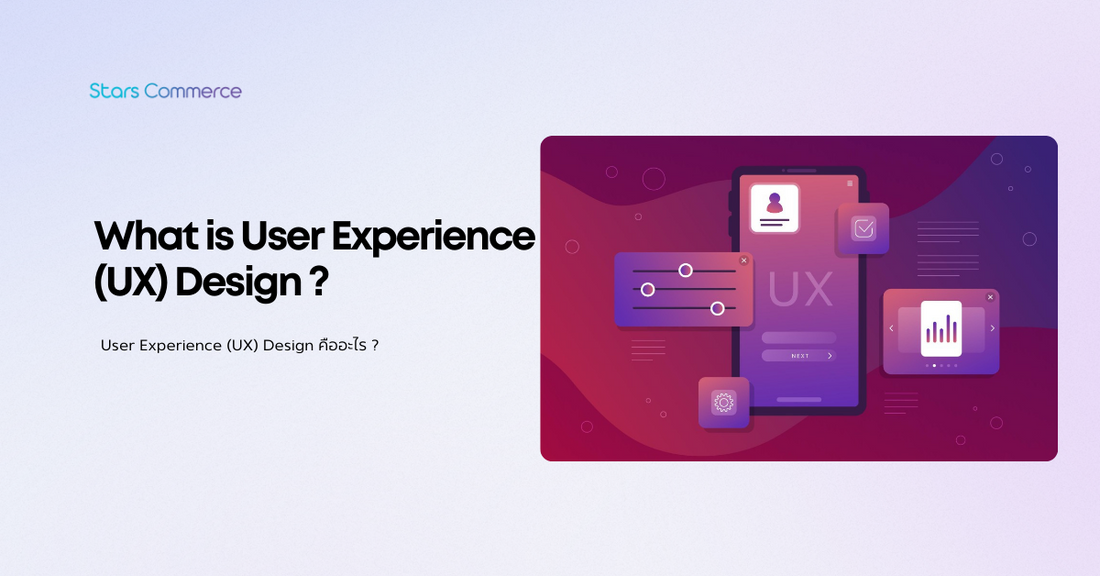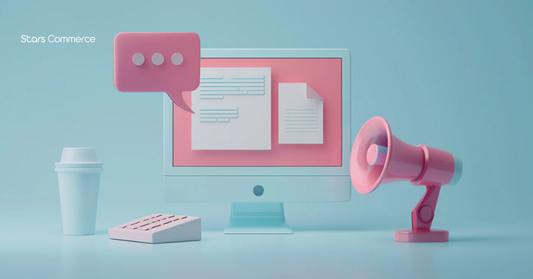User Experience, commonly referred to as UX, has become a buzzword in the world of technology and design. But what exactly is UX, and why is it so crucial in today’s digital industry online business? Let's understand the core concepts of UX, its components, and some real examples to provide a clear and accessible understanding.
Understanding User Experience (UX)
User Experience (UX) encompasses all aspects of a user's interaction with a product, system, or service. Most often it involves emotions, attitudes, and perceptions about using Websites or Apps. The goal of UX design is to create a smooth, efficient, and enjoyable experience for the user.
Key Components of UX

-
Usability: Refers to how easy and intuitive it is for users to achieve their goals using the product. A usable product is straightforward and easy to navigate.
-
Accessibility: Ensures that everyone, including people with disabilities, can use the product. Accessibility features may include screen readers for the visually impaired or voice control for those with limited mobility.
-
Desirability: This is about how appealing the product is to users. Desirability can be influenced by visual design, branding, and overall aesthetic.
-
Findability: How easily users can find the information they need within the product. This is critical for websites and applications where information architecture plays a significant role.
-
Credibility: Refers to how trustworthy and reliable the product appears to the user. This can be influenced by content quality, design, and the overall brand reputation.
-
Usefulness: Ensures that the product meets the needs of the user. A useful product effectively solves problems or fulfills the user’s needs.
- Value: Represents the benefit that the user gains from the product, balanced against the effort and cost of using it.
Why UX is Important?
-
User Satisfaction: Good UX leads to higher user satisfaction, making users more likely to return and recommend the product to others.
-
Increased Conversions: In business, UX can directly impact conversion rates. A seamless and enjoyable user experience can lead to more purchases, sign-ups, or other desired actions.
-
Competitive Advantage: Companies that prioritize UX can differentiate themselves from competitors. In a crowded market, superior user experience can be a significant selling point.
- Reduced Development Costs: By focusing on UX from the beginning, businesses can avoid costly redesigns and fixes later. Early user testing and feedback can identify potential issues before they become significant problems.
Examples of Good UX
To better understand what good UX looks like, let’s examine a few real-world examples from different industries.
1. O&B Store

O&B Store an e-commerce website that we designed, provides an outstanding shopping experience through effective UX design. The Key elements we included:
- Personalization: The site is personalized recommending products based on users purchase history, enhancing the shopping experience.
- Easy Navigation: Categories and filters are clearly defined, allowing users to easily find products. The search functionality is also efficient, providing quick access to desired items.
- High-Quality Visuals: Detailed product images and descriptions help users make informed purchasing decisions, reducing uncertainty and enhancing satisfaction.
- Checkout Process: The checkout process is simple and efficient, minimizing steps and making it easy for customers to complete their purchases.
2. Agora BKK

Agora BKK is a great example of a website with a user-friendly design that prioritizes ease of navigation and aesthetic appeal. Key elements of Agora BKK’s UX include:
- Clear and Intuitive Navigation: The website features a straightforward menu that makes it easy for users to find information about the restaurant, view menus, and make reservations.
- Responsive Design: The website is optimized for both desktop and mobile devices, ensuring a seamless experience regardless of how users access the site.
- Visual Appeal: High-quality images and a clean, modern design create an inviting atmosphere that reflects the brand’s identity.
- Content Organization: Information is well-organized, with sections clearly labeled and accessible, helping users quickly find what they need without feeling overwhelmed.
3. E-Commerce: Amazon

Amazon is renowned for its user-centric design. Key elements of Amazon’s UX include:
- Personalization: Amazon provides personalized recommendations based on users’ browsing and purchase history, making it easy to find relevant products.
- Easy Navigation: The website’s design is straightforward, with clear categories, search functionality, and filters that help users find products quickly.
- Streamlined Checkout: The one-click purchase option simplifies the buying process, reducing friction and abandoned carts.
- Customer Reviews: Product reviews and ratings from other customers provide valuable information, helping users make informed decisions. Product reviews and ratings from other customers provide valuable information, helping users make informed decisions.
4. Social Media: Instagram

Instagram offers an intuitive and engaging user experience through:
- Simple Interface: The app’s clean and minimalist design keeps the focus on content, making it easy to navigate and use.
- Engagement Features: Features like likes, comments, and direct messages encourage user interaction and engagement.
- Stories and Reels: These features allow users to share ephemeral content and short videos, keeping the platform dynamic and engaging.
- Algorithm-Driven Feed: Instagram’s algorithm curates content based on users’ interests and interactions, providing a personalized experience.
Common UX Design Mistakes to Avoid
While good UX design can significantly enhance a product, poor UX can detract from the user experience. Here are some common UX design mistakes to avoid:
1. Ignoring User Research
Skipping user research can lead to designs that don’t meet user needs. Always start with thorough research to understand your target audience.
2. Overcomplicating the Design
Simplicity is key in UX design. Overcomplicating the design with unnecessary features or complex navigation can frustrate users. Aim for a clean, intuitive design.
3. Poor Navigation
Users should be able to find what they’re looking for quickly and easily. Poor navigation can lead to a frustrating user experience. Ensure that your information architecture is logical and that navigation elements are clearly labeled.
4. Neglecting Mobile Users
With the increasing use of mobile devices, neglecting mobile UX is a critical mistake. Ensure that your design is responsive and provides a seamless experience across all devices.
5. Inconsistent Design
Inconsistencies in design elements such as colors, fonts, and button styles can confuse users. Maintain consistency to create a cohesive and professional look.
6. Slow Load Times
Users expect fast-loading websites and applications. Slow load times can lead to high bounce rates and a poor user experience. Optimize your design for speed.
7. Lack of Feedback
Users need feedback to understand the consequences of their actions. Whether it’s a button click or form submission, provide immediate feedback to keep users informed.
8. Overlooking Accessibility
Designing for accessibility ensures that your product can be used by everyone, including people with disabilities. Overlooking accessibility can exclude a significant portion of your potential user base.
The Future of User Experience - UX
The field of UX is constantly evolving, driven by technological advancements and changing user expectations. Here are some trends shaping the future of UX:
1. Voice User Interfaces (VUIs)
Voice assistants like Alexa, Siri, and Google Assistant are becoming increasingly popular. Designing for voice interactions presents new challenges and opportunities for creating intuitive and efficient user experiences.
2. Augmented Reality (AR) and Virtual Reality (VR)
AR and VR technologies are transforming the way users interact with digital content. These immersive experiences require new UX design principles to ensure that users can navigate and interact with virtual environments effectively.
3. Artificial Intelligence (AI) and Machine Learning
AI and machine learning are enabling more personalized and adaptive user experiences. By analyzing user behavior and preferences, AI can provide tailored content, recommendations, and interactions.
4. Emotional Design
Emotional design focuses on creating experiences that evoke positive emotions and build emotional connections with users. This approach goes beyond usability and functionality to create meaningful and memorable experiences.
5. Inclusive Design
Inclusive design ensures that products are accessible and usable by people of all abilities and backgrounds. As awareness of diversity and inclusion grows, inclusive design is becoming a critical aspect of UX.
6. Sustainable UX
Sustainable UX considers the environmental impact of digital products and aims to reduce energy consumption and waste. This includes optimizing websites and applications for lower energy use and promoting digital sustainability.
Conclusion
User Experience (UX) is a multifaceted discipline that plays a crucial role in the success of digital products or services. By focusing on usability, accessibility, desirability, and other key components, UX design aims to create satisfying and meaningful experiences for users. Through a systematic design process involving research, ideation, design, testing, and iteration, businesses can develop products that meet user needs and drive engagement.
For businesses aiming to achieve the best user experience and long-term success, partnering with an expert agency is key. Stars Commerce stands out as the best agency to reach out to for exceptional e-commerce Shopify website design. Our expertise ensures that your products and services not only meets user needs but also excels in delivering a seamless and engaging experience. With Stars Commerce, you can be confident in achieving a top-notch user experience that drives satisfaction and growth.



